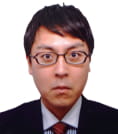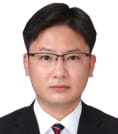- JST Home
- /
- Strategic Basic Research Programs
- /
 PRESTO
PRESTO- /
- project/
- Information Carriers and Their Integrated Materials/Devices/Systems/
- [Information Carriers] Year Started : 2020
[Information Carriers] Year Started : 2020
Keigo Arai
Development of multimodal quantum sensor using electronic spins in diamond
Grant No.:JPMJPR20B1
Researcher
Keigo Arai

Associate Professor
School of Engineering, Department ofElectrical and Electronic Engineering
Tokyo Institute of Technology
Outline
Multimodal sensing of physical quantities is a key technology for realizing cyber-physical-space in Society 5.0. In this research, I will use nitrogen-vacancy color centers in diamond as magnetic, temperature, pressure, and rotation sensors that function under various temperature and pressure.
Yuichiro Ando
Logic operation of electron spins in silicon
Grant No.:JPMJPR20B2
Researcher
Yuichiro Ando

Professor
Graduate School of Engineering
Osaka Metropolitan University
Outline
Electron spins in silicon has a many advantages such as a long spin lifetime and compatibility with the mature electronic devices. The aim of this project is to establish novel logic devices operated by electron spins in silicon by using a precise control of number of spins and its direction. To realize the precise control of the spins, novel ways by using electric fields, magnetic fields, impurities and spin-orbit coupling will be investigated.
Takao Shimizu
Development of the ferroelectric tunnel junction devices by the wurtzite-type polar materials and elucidation of their physical nature
Grant No.:JPMJPR20B3
Researcher
Takao Shimizu

Independent Scientist
Research Center for Functional Materials
National Institute for Materials Science
Outline
The wurtzite-based ferroelectric materials are new-class ferroelectric materials, which have a giant spontaneous polarization, a large coercive field, and an anisotropic crystal structure. The ferroelectric tunnel junction with a large resistive on/off ratio and good retention properties even in ultra-thin films will be developed by these wurtzite-based ferroelectric epitaxial films. The increase in the device reliability, control of the physical nature, and investigation of the availability of the device integration will be conducted through clarifying the polarization switching mechanisms and questing new wurtzite-type polar materials.
Rina Takagi
Development of novel materials hosting magnetic skyrmions and exploration of their function for next-generation magnetic memory
Grant No.:JPMJPR20B4
Researcher
Rina Takagi

Associate Professor
The Institute for Solid State Physics
The University of Tokyo
Outline
Magnetic skyrmion is a vortex-like swirling spin objects with a particle-like character and attracting much attention as potential information carrier for next-generation magnetic information storage and processing devices with large capacity and low energy consumption. The aim of this research is developing novel bulk compounds with nanometer-scale magnetic skyrmions to establish a new route to generate high-density skyrmions. I will also investigate their electromagnetic responses to explore the electronic function for future device application.
Takahisa Tanaka
Time series analysis of multicomponent gas mixtures by large-scale integrated gas sensors
Grant No.:JPMJPR20B5
Researcher
Takahisa Tanaka

Senior Assistant Professor
Faculty of Science and Technology
Keio University
Outline
To realize health management based on exhaled breath, which is a multi-component gas mixture, I will develop a large-scale integrated gas sensors. Specifically, with i) using ion gel as the core material of the sensors and ii) multifunctionalization of the sensors by local Joule heating, proposed sensor realizes the large-scale integration on a compact platform that could not be realized by conventional sensors.
Jun Hirotani
The creation of innovative flexible thermal device based on electrons and holes as information carriers
Grant No.:JPMJPR20B6
Researcher
Jun Hirotani

Associate Professor
Graduate School of Engineering
Kyoto University
Outline
In this research, electrons and holes in materials with high carrier concentration is defined as information carriers, and the thermal transport control based on the active carrier tuning by the electric field is explored. In addition to the creation of innovative flexible thermal control devices, I will challenge making highly-stable, ultra-thin, flexible heat flux sensor using a P/N-doped atomic layer materials.
Naoji Matsuhisa
Skin-conformable soft diodes by stretchable conductors and semiconductors
Grant No.:JPMJPR20B7
Researcher
Naoji Matsuhisa

Associate Professor
Institute of Industrial Science
The University of Tokyo
Outline
Skin-like soft electronic devices are essential to realize the next-generation wearable devices for healthcare, virtual/augmented reality (VR/AR), and robotics. However, high-performance stretchable semiconductor devices has been difficult to be realized because of the lack of suitable stretchable electronic materials and the processes to maximize the performance. In this project, I will develop stretchable diodes and explore the underlying physics, in order to enable high-density sensor matrices, solar cells, photodetectors, and displays which are all useful in the next-generation wearables. The devices will be developed through materials and process engineering of polymeric materials or the hybrid with inorganic/carbon nanomaterials.
Takeo Miyake
Bioiontronics for interactive communication with biology
Grant No.:JPMJPR20B8
Researcher
Takeo Miyake

Professor
Graduate school of information, production and systems
Waseda University
Outline
The bioiontronic device proposed in this project enable new functions that could not be realized in conventional devices, such as transport of multiple substances (like in open system), carrier control of electrons and ions (bidirectional signal transfer system), and self-powered system with biochemical energy (no external power source required). The proposed devices provide a new way to translate bidirectionally between the ionic language of biology and the electronic language of circuitry.
Takahiro Moriyama
Development of Spin superfluid devices using antiferromagnetic thin films
Grant No.:JPMJPR20B9
Researcher
Takahiro Moriyama

Professor
Graduate School of Engineering
Nagoya University
Outline
In general, superfluidity is a non-dissipative fluid phenomenon represented by liquid helium superfluidity and superconductivity. On the other hand, a magnetic material having a two-dimensional topology in the order parameter space is predicted to exhibit “spin superfluidity” which is an ultra-low dissipative current of spin angular momentum. This research aims to realize spin superfluidity by designing the topology of magnetic anisotropy in antiferromagnetic thin films, and to create spin transport devices with ultra-low energy consumption.
Michihiro Yamada
Development of semiconductor-based vertical spin device with highly efficient spin injection technology
Grant No.:JPMJPR20BA
Researcher
Michihiro Yamada

Specially Appointed Associate Professor
Graduate School of Engineering Science
Osaka University
Outline
This project aims to achieve high performance operation of semiconductor-based vertical spin devices with atomic layer controlled ferromagnet/semiconductor interface. For significant improvement in performance of semiconductor-based spin devices, I will realize the atomically abrupt interface of ferromagnet/semiconductor and establish the atomic doping technique on a semiconductor interlayer in the vertical spin devices. These achievements will pave a way for social implementation of innovative devices making possible 3D integration and low power consumption.













